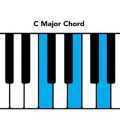Music is rare in the fact that it’s one of the most powerful things in the world even though it’s a shapeless force that we can’t touch or see. There’s music specifically written for when a person goes off to war, falls in love for the first time, and for when someone sits down to contemplate life’s most difficult questions. But while music is and always will be hugely meaningful, it remains a difficult art to comprehend for new musicians. Smart and focused ear training exercises can help us to recognize the ideas and relationships that govern this incredible art form.
In this article, we’ll show you some easy ways to help train your ears and give you a greater understanding of music and how it applies to your specific instrument. We’re going to use the piano’s keyboard as a visual aid here, but the helpful tips discussed in this article speak to the rules and ideas that govern all of music, and can be applied to any pitched instrument.
Musical Permanence
Yes, it can be a hugely difficult process for newer students trying to understand music, but something most people can’t see when they hear music is that it’s governed by permanent relationships that never change. This means that if we can begin to recognize a few simple relationships found in music that this shapeless thing will, well, begin to take shape. That’s not all the good news. These simple relationships can be built by applying simple formulas to our instruments. Again, we’re going to show you these formulas with the visual aid of a keyboard, but feel free to apply them to your specific instrument.
Intervals
If you want to learn about the permanent ideas that shape music, learning to recognize and play intervals is a great place to start. Intervals are specific relationships between two notes found in music. Combinations of intervals are what create basic and complex chords, but more on that in a bit. Your first and most important ear training job should be to memorize what each interval sounds like.
The best way to do this is to learn to recognize the intervals you hear in popular music. We’re going to talk about each interval in music, show you how to play it, and tell you where it’s heard in popular music. To make things easy, we’re going to show you these intervals in the key of C major (the key signature with no flats or sharps), but you should absolutely learn to play these intervals in different keys once you understand them in C Major.
Minor 2nd (m2) One half-step away from root- Jaws Theme
Minor 2nds are famously dissonant intervals found in music. Starting from C, play the C# directly above and you’ll get an interval of a minor 2nd. This interval is found in the soundtrack of the movie Jaws. If you slowly play this interval in the lower register, it should match the exact sound and feel of the Jaws theme.
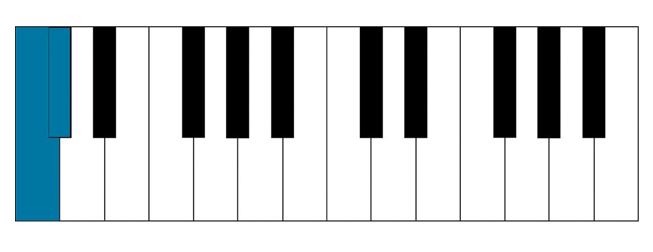
Major 2nd (M2) Two half-steps away from root- “Chopsticks,” by Chopin
The major 2nd is a consonant interval. Though it’s found in nearly every vocal melody in a major key you can think of, it’s most famously heard in the opening notes of “Chopsticks” by the composer Chopin. Starting with C, move up to the note of D and you’ll get a major 2nd. If you play the notes simultaneously, you’ll get a sound that resembles “Chopsticks.” It can also be heard on the melody from the “Happy Birthday” song.
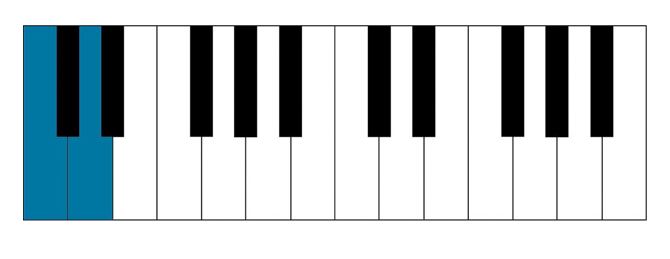
Minor 3rd (m3) Three half-steps away from root- “Greensleeves,” by Unknown
This consonant interval sounds pensive and morose. It’s the foundational interval found in minor chords and can be heard in the introductory pitches of the English folk song “Greensleeves.” The distance from C to an Eb, three half-steps above, is a minor 3rd.
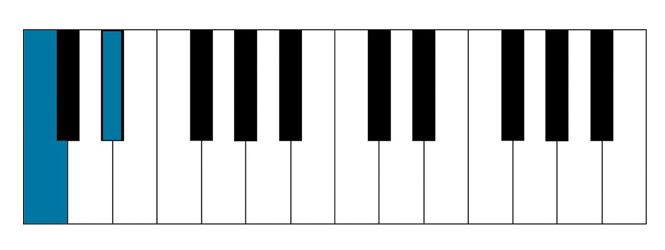
Major 3rd (M3) Four half-steps away from root- “When The Saints Go Marching In,” by Unknown
Major 3rds feature a whole and complete sound. They are the foundational intervals found in major chords and their consonant sound signature is found in the opening melody of the American gospel hymn “When The Saints Go Marching In.” Starting with C, move up four half-steps to E and you’ll get an interval of a major 3rd.
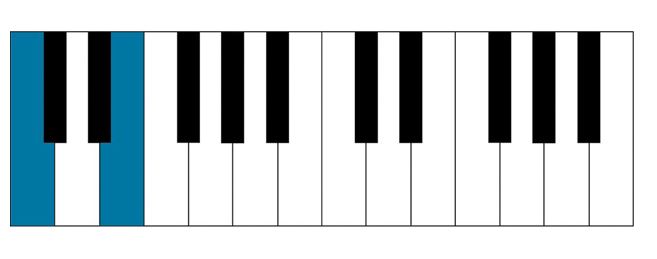
Perfect 4th (P4) Five half-steps above root- “Here Comes The Bride,” By Wagner
Perfect 4ths are consonant intervals. A perfect 4th is found in the opening melody of Wagner’s “Here Comes The Bride.” The distance between C and F, five half-steps above, is a perfect 4th.
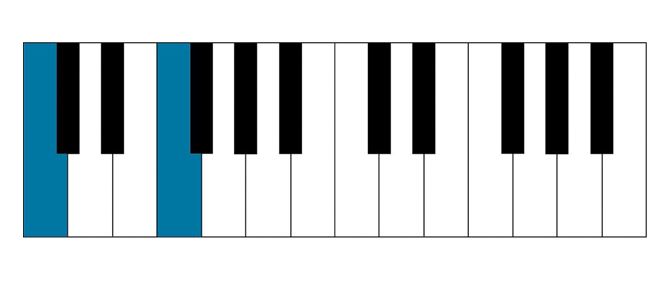
Tritone (TT) Six half-steps above root- Theme song from The Simpsons
Tritones are such dissonant intervals that they were banned from church renaissance music and labeled “the chord of the devil.” A tritone is found in the opening melody of the theme song from the show The Simpsons, and it’s an integral part of the dissonance found in diminished and dominant chords. The distance between a C and F# is a tritone.
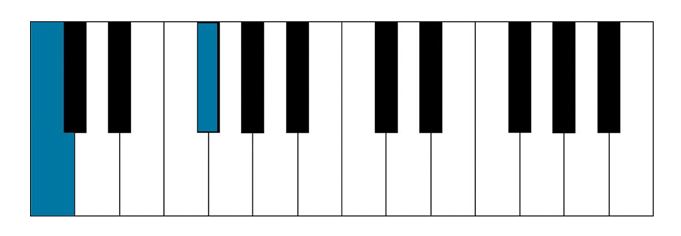
Perfect 5th (P5) Seven half-steps above root- Theme from the Star Wars movies
Perfect 5ths are the most consonant interval for a reason that can be explained through science. When you play a root note and a 5th above it in unison, it sounds hollow because a perfect 5th interval is naturally found in every note already through something called the overtone series. When you play a note, you’re actually playing many notes at the same time, and the perfect 5th interval is the most prominent added note that naturally occurs. These intervals are literally inescapable in music, and one can be found in the opening melody of the theme from Star Wars. The relationship between a C and the G seven half-steps above is a perfect 5th.
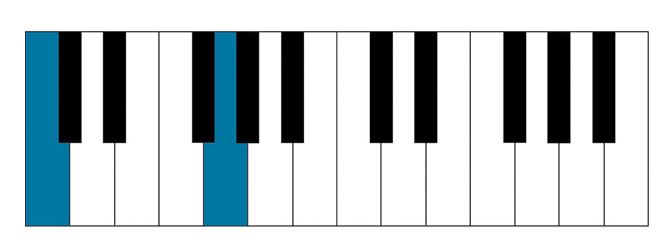
Minor 6th (m6) Eight half-steps above root- “The Entertainer,” by Scott Joplin
This interval is heard after the two pickup notes in the ragtime piano song “The Entertainer.” The relationship between a C and an Ab is a minor 6th interval.
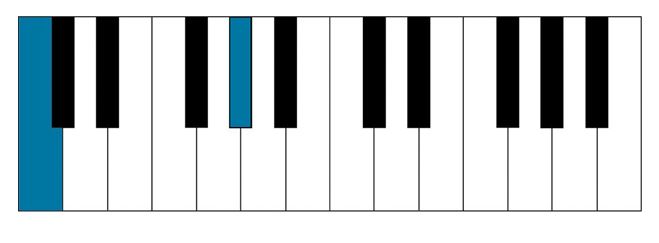
Major 6th (M6) Nine half-steps above root- NBC’s theme song
This consonant interval is heavily used by composers and songwriters because it can either be heard as a major interval or as an inverted minor chord. It’s heard in the opening notes of the NBC theme song. A C note moving to an A is a major 6th.
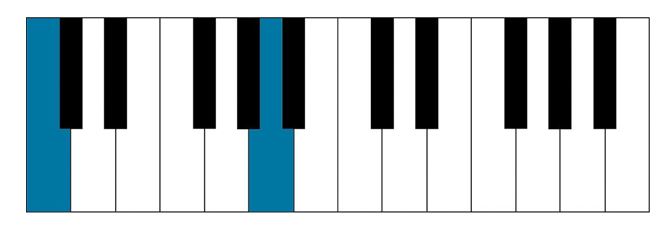
Minor 7th (m7) Ten half-steps above root- “Somewhere,” from Westside Story
Minor 7th intervals are found in dominant chords as well as minor 7th chords. They are heavily featured in the song “Somewhere” from the musical Westside Story. A C moving up to a Bb is a minor 7th interval.
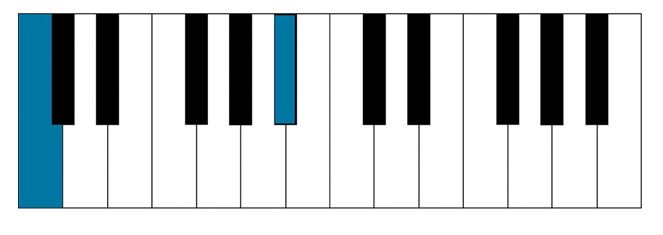
Major 7th (M7) Eleven half-steps above root- “Take On Me,” by A-Ha
Ear training exercises featuring major 7ths might be a little tricky because these intervals sound similar to minor 2nds depending on how you play them. They’re found in chorus melody of the A-Ha hit “Take On Me,” and they’re the main interval found in major 7th chords. The relationship between a C and a B nearly an octave above is a major 7th.
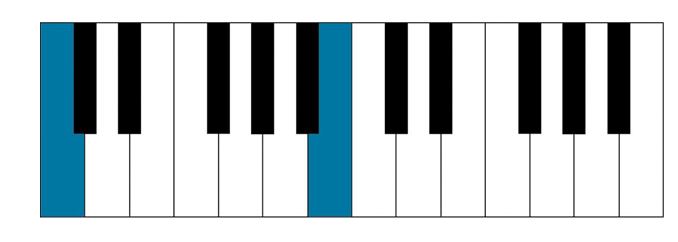
Octave- Twelve half-steps above root- “Somewhere Over The Rainbow,” from The Wizard Of Oz
There are lots of C notes in music, but each one is very different. The distance between one C and the C 12 steps above is called an octave. This interval is found in the opening melody of the song “Somewhere Over The Rainbow.”
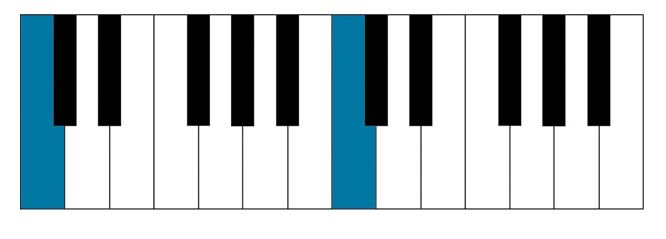
The intervals described above are the building blocks of much of what you hear in music. They form the chords and melodies you hear in everything from great symphonic works down to jingles written to sell cleaning products.
Knowing these intervals and developing the skill of being able to pick them out in the music you hear is a powerful ear training tool that will give you a helpful new context to the music you listen to, write, or perform. To memorize the unique sound of these intervals, start by learning how to play them in various keys. Start by playing them separately, and then play them with the notes played in unison so you can learn to identify them when they’re being played as chords.
Record a long series of intervals and write down the name of each one you play. Make sure the intervals are played in various keys and registers on your instrument. Play the recording back and write down the name of each of the intervals you hear to test yourself. If you find yourself struggling with being able to identify one type of interval, focus on that interval until you’re confident that you can identify it in music.
Identifying Basic Chords
If you’re able to successfully identify musical intervals then being able to pick out basic chords in music won’t be very difficult. This is because combinations of intervals are what form the basic chords we hear in music. By “basic chords,” we’re talking about major, minor, and diminished chords. These three types of chords are considered basic because they’re the chords you’ll hear in major and minor key signatures. If you’re not familiar with key signatures, check out our recent article on Basic Music Theory.
When you’re able to identify basic chords, you’ll begin to notice the unique relationships formed between chords in music.
Major Chords- Root + Major 3rd + Perfect 5th
These chords sound full, complete, and stable. Starting from C, an added major 3rd and perfect 5th adds E and G notes to form a C major chord.
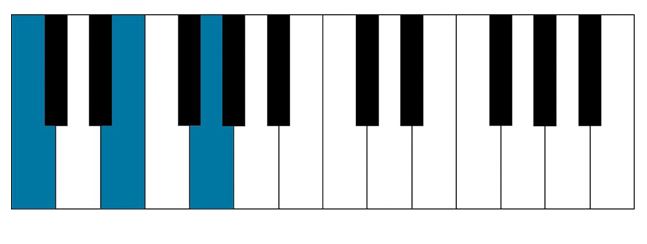
Minor Chords- Root + Minor 3rd + Perfect 5th
For lack of a better word, most people describe minor chords as sounding “sad,” but that descriptor doesn’t apply to all uses of minor chords. Traditional Indian music, for example, heavily relies on minor chords with results of deep, pensive, and contemplative music that wouldn’t be described as melancholy. The notes of C, Eb, and G form a C minor chord.
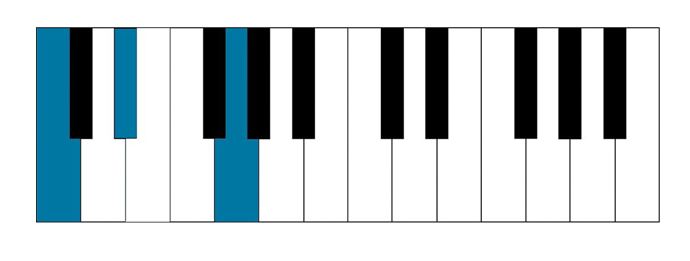
Diminished Chords- Root + Minor 3rd + Tritone
Diminished chords sound startlingly different than their major and minor counterparts. The function of these tense-sounding chords is to deliver dissonance to music. The tritone interval in these chords is responsible for the dissonance you hear. C, Eb, and Gb form a C diminished chord.
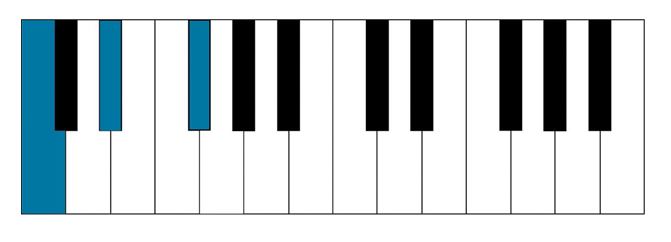
Try building these chords in various keys and registers on your instrument. For chord memorization ear training, try recording various basic chords the same way we told you to do for your intervals. Once you’re able to identify the sound of each basic chord, move on to memorizing the sound of extended chords and inversions.
Extended Chords and Chord Inversions
Extended and inverted chords both feature basic chords being played with added or rearranged notes. For example, a C major 7th chord features the added interval of a major 7th, which is a B note. A C major 7th chord would be C,E,G, and B. Memorizing what 7th chords sound like is a great place to start your ear training for extended chords.
Chord inversions are chords where the root isn’t played in the bass. For example, if you come across a chord where the notes are stacked like E-G-C, then we’d call this chord an E/C, or E over C. Don’t add extended and inverted chords into your ear training until you’ve fully covered intervals and basic chords.
A Powerful Music Insight
Ear training helps give musicians a powerful musical insight that they won’t get from just learning to play their instruments or listening to music. Ear training teaches us that everything in music is connected and becomes familiar to us after we begin to listen critically. Adding these simple ear training exercises into your daily practice routine can do huge things for your musicianship.




